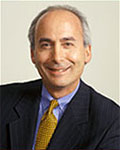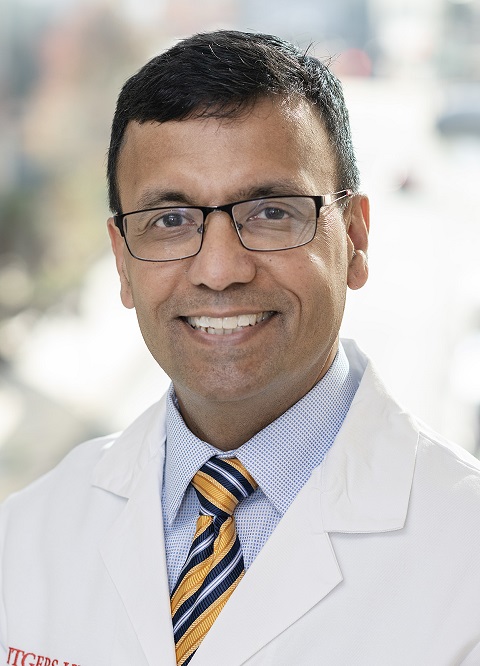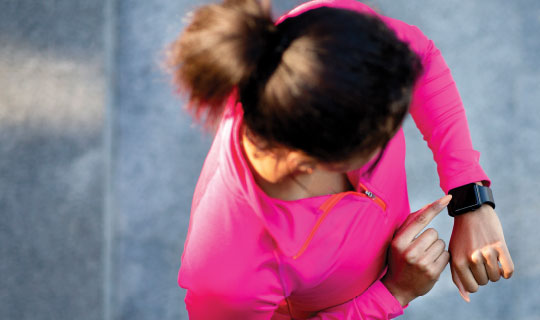What can a digital cardiac device tell you about your heart's rhythm?
“Call your doctor,” said the message on the 87-year-old woman’s Apple Watch. A regular walker and exerciser, the woman wasn’t feeling right, so she’d checked the Heart Rate app. It showed that her heart rate was significantly slower than normal.
Her son took her to the emergency department, where an electrocardiogram determined that there was a problem with the electrical signals in her heart. The next morning, doctors implanted a pacemaker.

“Her diagnosis was clearly aided by her having an Apple Watch,” says the woman’s cardiologist, Gary Rogal, MD, Medical Director for RWJBarnabas Health Cardiovascular Services and a member of RWJBarnabas Health Medical Group. “I believe wearable digital devices that measure heart rhythm will become a major addition to the diagnostic tool kit for cardiologists.”
Who should wear one of these devices? The short answer: people whose doctors recommend it.
“Wearable cardiac devices are very handy tools, but you have to be selective about how you use them,” says Dr. Rogal.
The Heart's Rhythm
The main value of wearable cardiac technology lies in its ability to detect cardiac arrhythmias, or irregular heartbeats, Dr. Rogal explains. These occur when the electrical signals that coordinate the heart’s beats don’t work properly. In turn, the heart can’t pump blood effectively.
Symptoms of arrhythmia include a fluttering in the chest, shortness of breath, fainting, dizziness or a feeling that the heart is racing or beating too slowly. The symptoms may be brief or long-lasting, and they can indicate a condition that’s anywhere from harmless to life-threatening.
“If I’m concerned about arrhythmia based on what the patient is telling me, but just can’t nail down the diagnosis, I might suggest that a patient use a wearable cardiac device,” says Dr. Rogal. “The decision should be made along with a physical exam and a knowledge of the patient’s medical history and symptoms. If there’s no real reason to have one, wearing the device could do nothing more than make a patient anxious.”
New Tools
An early form of wearable cardiac technology, the Holter monitor, has been around for decades. This device uses electrodes (small, plastic patches on the skin) to record the electrical activity of the heart. “A patient can wear a Holter monitor for 24 to 48 hours or even longer,” Dr. Rogal explains. “The reality is, though, that some patients have arrhythmias once every few weeks or even every few months, and a Holter monitor could miss that,” he says. “That’s the type of thing a smartwatch would pick up.”
Dozens of wearable devices are on the market today. Examples include:
KardiaMobile, a pocket-sized portable EKG machine that allows patients to put their fingers on sensors and share the results with their doctor.
The MCOT Patch System, which monitors the heart rhythm for two weeks via a sensor on the patient’s chest.
Other digital cardiac devices, which must be implanted by a physician, are also coming into wider use. Examples include:
A device called CardioMEMS, which monitors pulmonary artery pressure and sends the results to a team of clinicians.
A loop recorder, a device smaller than a USB flash drive, that’s placed just underneath the skin near the breastbone. It can continuously record a patient’s heart rhythm for up to three years. “If a patient calls me and says, ‘Hey, I’m feeling funny, a little lightheaded,’ I can interrogate the loop recorder and see what the heart rhythm was during that symptom,” says Dr. Rogal.
Artificial Intelligence
The key to the success of these technologies lies in artificial intelligence (AI)—the ability of a computer to compare an individual’s data against that of thousands of other patients and flag information that may be significant.

“AI allows information to be provided to the care team in a very nuanced way,” says Partho Sengupta, MD, Chief of the Cardiology Service Line at Robert Wood Johnson University Hospital (RWJUH) and Chief of the Division of Cardiology at Robert Wood Johnson Medical School. “The device will only send an alert if it thinks the data is moving in the wrong direction and the patient is not doing well, as opposed to a steady stream of data, which can be overwhelming.”
The cardiology team at RWJUH meets regularly with doctors in the community to discuss the digital transformation of cardiology and consider innovations for treatment. Dr. Sengupta and his colleagues are conducting several clinical trials, including one for an armband that can monitor multiple physiological signals and offer personalized recommendations for a patient’s care.
“For the future of cardiology, our overall concept is that care starts in the patient’s home and ends at home, with the hospital and the clinic only points along the way,” Dr. Sengupta says. “In order for us to connect the whole journey, we need to have the ability to continuously monitor a patient’s health.
“It’s like how we use a GPS to help us on a road journey,” he says. “Now it’s time to take that approach and apply it to our health journeys.”
Whoever your heart beats for, our hearts beat for you. To connect with a top cardiovascular specialist at RWJBarnabas Health, call 888-724-7123.
